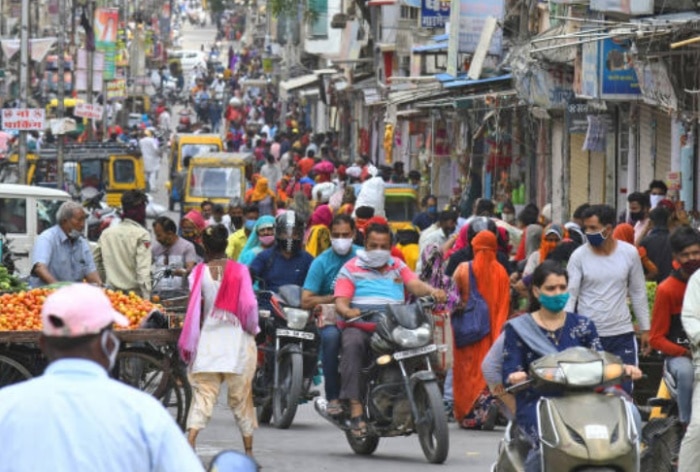Doctors at AIIMS have urged people to remain vigilant amid the uptick in JN.1 cases even as India on Saturday witnessed a single-day surge of 752 COVID-19 infections.
COVID-19 Update: India on Saturday logged 752 Covid-19 fresh cases, the highest since May 21 this year, even as doctors at the All India Institute of Medical Sciences (AIIMS) urged people not to panic due to the emergence of JN.1 sub-variant of the lethal virus.
According to Union health ministry data updated on Saturday, India witnessed a single-day surge of 752 coronavirus infections, taking the number of active cases in the country to 3,420. The death toll was recorded at 5,33,332 with four new deaths — two from Kerala, one each in Rajasthan and Karnataka — reported in a span of 24 hours, the data updated at 8 am stated.
As per the ministry’s data, the country’s Covid case tally stood at 4.50 crore (4,50,07,964) while the
number of people recuperated from the disease has increased to 4,44,71,212, and the national recovery rate stands at 98.81 per cent
The fatality rate stands at 1.19 per cent, it said, adding that 220.67 crore doses of Covid vaccine have been administered in the country so far.
‘Remain vigilant, don’t panic’: AIIMS
Meanwhile, amid the uptick in the cases of the new COVID subvariant JN.1, AIIMS doctors urged people to not panic but rather remain alert and vigilant.
“People are getting infected by the new sub-variant of COVID-JN.1 in many states of the country. The symptoms of the patients are mild. Therefore, there is no need to panic but the need to remain alert,” doctor Neeraj Nischal– an Additional Professor in the Department of Medicine at AIIMS Delhi, told news agency ANI.
“We have been saying this type of ripple will keep on happening. Even during the first and second waves, we predicted that this virus would mutate further and the stage would come where it would become more infectious but at the same time cause less mortality or morbidity,” he said.
“So this is, you can say, a fight between the viruses in human beings who are also trying to survive. People are becoming infected but at the same time, it’s not causing the problem that its predecessors, like the delta variant, caused,” said the doctor.
“The important thing is that we are more aware of this virus and that we know how to deal with it. So if you see cases increasing, that shows that our surveillance system is in place, and we can pick up any new surge or any new variant that is coming into our society. So this should not be a cause for panic. This only shows how well we are prepared now and I think we should be able to handle this in a good way,” he added.
JN.1 similar to Omicron
Doctor Neeraj Nischal further said, “From the data that is emerging, the new subvariant is not very different from omicron. We are looking into whether the virus is causing similar types of symptoms like coughing, cold, sneezing, fever, and body aches.”
The doctor also stated that the team of health specialists is investigating whether the subvariant is causing serious lung damage, whether it’s causing oxygen requirements, or whether it needs hospitalisation.
“There are certain pockets in the country where we are witnessing cases, but that cannot be generalised for the country. So it’s good. We have a good surveillance system in place and we can contain this disease and that’s the most important thing,” added the doctor.
“I will not say that we are seeing an increased number of COVID cases in our OPD it’s not like that. We do witness a lot of common cold and flu patients this season. So this is a generalised type of respiratory infection that happens during the winter so there is nothing new that we are witnessing at the moment,” he said.
“I won’t be saying that we are witnessing an increased number of cases or something serious about patients. No, it’s the routine cases that we see every winter. That’s what we are witnessing now,” he added.
Doctor Nischal said that hospitalisation is not increasing, patients are not requiring oxygen, and the mortality rate is not increasing, so there is no need to panic, but this is the time to be alert, and because this disease has been fought earlier also, we are ready because the cases may increase further in the future.
(With ANI inputs)
–>
